Bitcoin's Trajectory - Crypto Academy S4W5 - Homework Post for @imagen
Thank you, Prof; @imagen for another wonderful and well laid out lecture. Deeply appreciated.
1. How many times has Bitcoin been "halved"? When is the next expected? What is the current amount that Bitcoin miners receive? Mention at least 2 cryptocurrencies that are or have halved.
Bitcoin halving usually happens every four years. The first bitcoin halving happened on November 28, 2012, after a total of 10,500,000 Bitcoin had been mined. The following one occurred on July 9, 2016, and the last one and the latest one was on May 11, 2020. So, Bitcoin halving has occurred 3 times.
Bitcoin halving means when the step of new BTC creation is cut in half. It occurs whenever 210,000 blocks are mined, or about every four years, until all twenty-one million bitcoins are mined completely.
In 2012, the first Bitcoin halving cut the reward for mining 1 block from 50 BTC to 25 BTC. The bisection event cut rewards from 25 BTC to 12.5 BTC per block mined in 2016. And on May 11, 2020, just 6.25 new BTC are made with each new block mined.
Currently, the block reward for BTC is staged at 6.25 BTC per block. The next halving has been forecasted to happen in 2024 around spring time and the block reward will reduce to 3.125.
[Source]
Two cryptocurrencies that are or have halved:
- Litecoin
- Dogecoin
Litecoin
A Litecoin halving will take place because the number of generated Litecoin rewards per block is halved.
It occurs roughly every four years, similar to bitcoin. Litecoin halvings purpose is to protect Litecoin’s buying power. August 5 2019 was the last Litecoin halving and when that happened then, the mining reward was dropped from 25 Litecoins per block to 12.5 Litecoins per block (just half of it as expected)
Another forecasted Litecoin halving is to occur on August 6 2023 and the reward will be reduced from 12.5 to 6.25 Litecoins. Just 2 years from now...
[Source]
Dogecoin
Before now and as far back as 2015, Dogecoin halvings usually occur every 100,000 blocks or imprecise every 69 days but now, Doge will no longer halve block rewards and it will make the same amount of new coins per block for whenever it is mined.
[Source]
2. What are consensus mechanisms? How do Proof-of-Work and Proof-of-Staking differ?.
Consensus mechanisms are also known as consensus algorithms or consensus protocols. It allows parcel out systems (networks of computers) to work together and stay safe.
For many years, these mechanisms have been useful in making consensus among database management system nodes, application servers, and other enterprise organizations. In these recent years, new consensus mechanisms were made up to permit crypto-economic systems, like Ethereum, to concur on the network state.
Consensus mechanism also helps to hinder certain kinds of economic attacks. In theory, an attacker can split the difference between consensus by controlling 51% of the network. Consensus mechanisms are created to make this "51% attack" undone. Different mechanisms are designed to solve this security problem in many ways.
Proof-of-Work and Proof-of-Staking are types of consensus mechanisms
Proof-of-work is done by miners, who contest to make new blocks that are full of completed transactions. So, the miner that wins the contest shares the new block with the rest of the network and earns new-minted ETH as a reward. The race is won by whose system solve a math problem first. This makes the cryptographic link in between the current block and the block that exist before. Solving this problem is the work in "proof-of-work". You would need 51% of the network's computing power before you can fraud the chain.
Proof-of-stake is done by validators that have staked ETH to take part in the system. A validator is chosen at rando way to make new blocks, share them with the network and be rewarded. You don't need to do intense computational work, what you need is to stake your ETH in the network. This is what motivates healthy network behaviour. You would need 51% of the ETH staked to defraud the chain.
How Proof-of-Work and Proof-of-Staking is differing
Proof-of-work is done by miners who contest to make new blocks that are full of transaction while proof-of-stake is done by validators that staked ETH to take part in the consensus protocol.
For Proof-of-work, You would need 51% of the network's computing power before you can fraud the chain but for Proof-of-stake, You would need 51% of the ETH staked to defraud the chain.
3. Enter the Bitcoin explorer and indicate the hash corresponding to the last transaction. Show Screenshot.
Go to https://www.blockchain.com/explorer to get the last hash...
The last hash: 9f7cb0689480c05a5e7facdd6b7065f1c0d5eb20da4b42ea7576198026259a56
Here is the information of the hash in the screenshot below:
**
4. What is meant by Altcoin Season? Are we currently in Altcoin Season? When was the last Altcoin Season? Mention and show 2 charts of Altcoins followed by their growth in the most recent Season. Give reasons for your answer.
When alternative coins apart from Bitcoin tend to perform better than Bitcoin is when we call "Altcoin season". In another word, it is a time in the cryptocurrency market where alternative coins tend to perform better than the leading cryptocurrency which is Bitcoin. An alternative coin is a coin that's typically used to refer to any cryptocurrency that is not Bitcoin.
Any period in the market where most altcoins make more profit than the profit Bitcoin made is when we call Alt-season.
Currently, we are not in the Altcoin session, the last Altcoin was on September 7, 2021, where Solana's cryptocurrency (SOL) has jumped to 7th among the top 10 cryptocurrencies.
The two Altcoin I'll give the screenshot are Solana and zugacoin
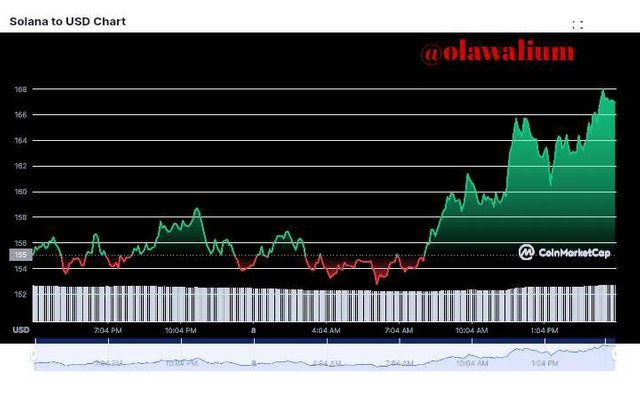
Solana chart
source
As SOL has been among the top 10 in the cryptocurrency market since September 7, although its price can't be stable because that's one thing about cryptocurrency but the price didn't come down with speed like the zuga coin price.
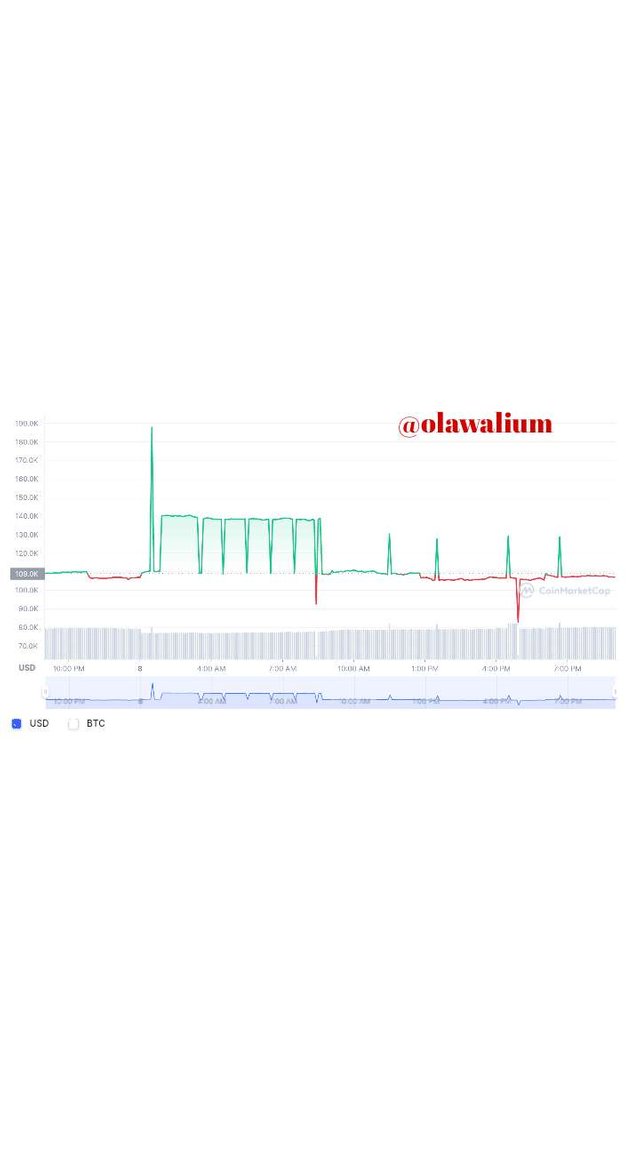
zugacoin charts
coinGecko
Investors would find it hard to understand zugacoin as its price goes up and down with speed.
5. Make a purchase from your verified account of the exchange of your choice of at least 15 USD in a currency that is not in the top 25 of Coinmarket (SBD, tron or steem are not allowed). Why did you choose this coin? What is the goal or purpose behind this project? Who are its founders/developers? Indicate the currency's ATH and its current price. Reason for your answers. Show Screenshots.
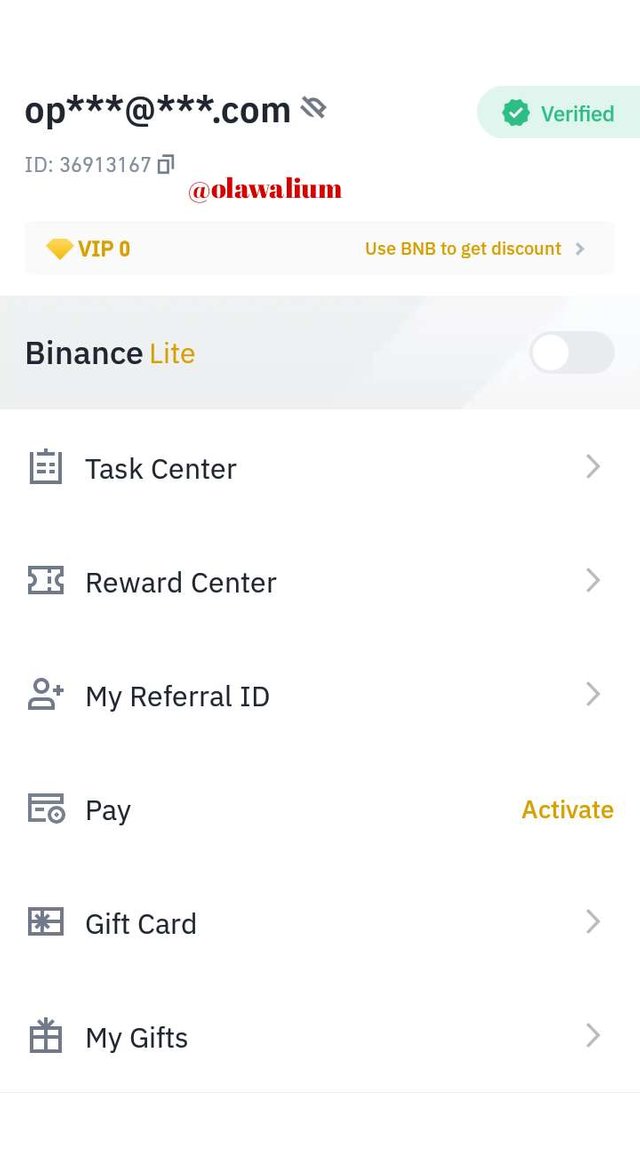
This is to show that it's a verified account
screenshot from Binance wallet and edited with PicsArt
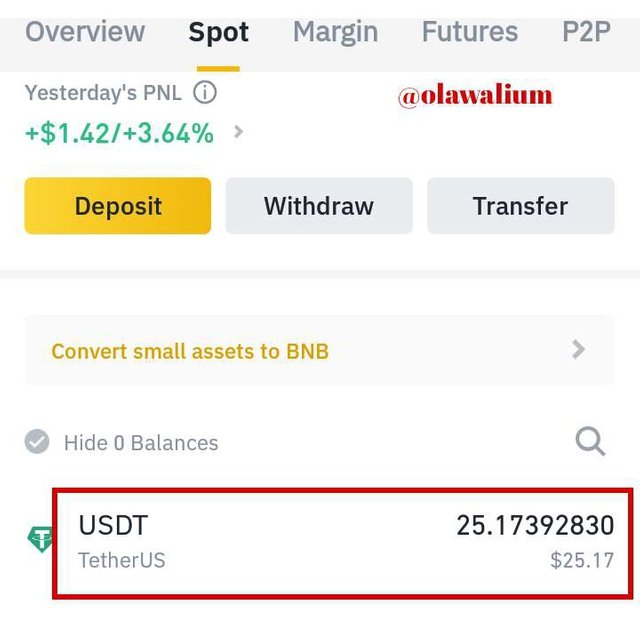
I have 25 USDT so I'm buying AAVE with the whole 25 USDT.
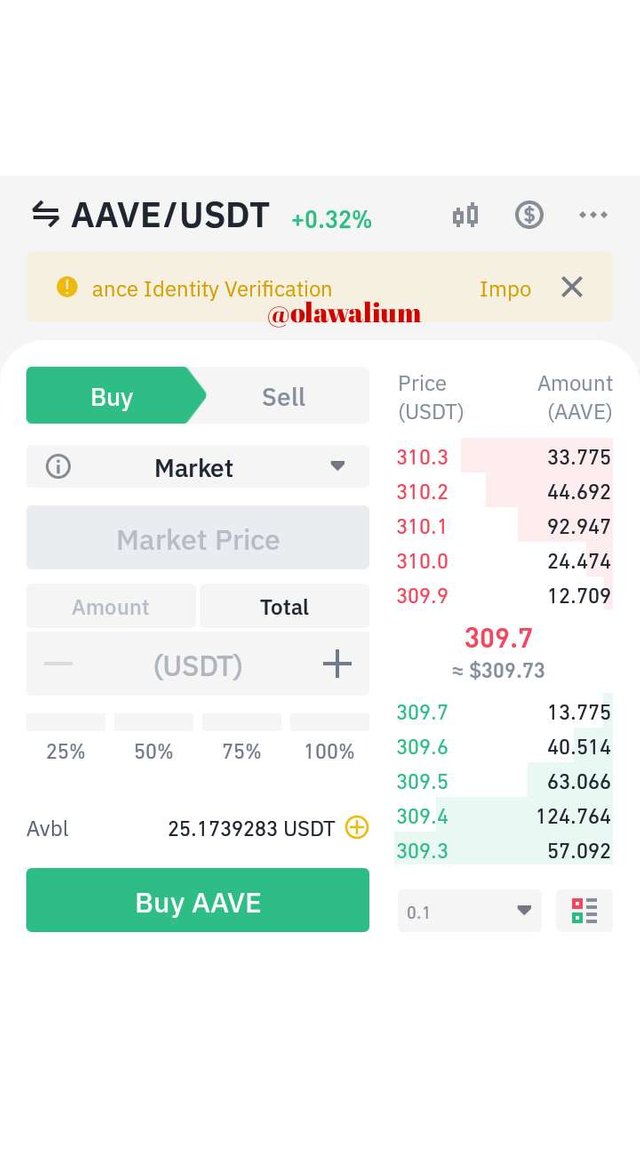
screenshot from Binance wallet and edited with PicsArt
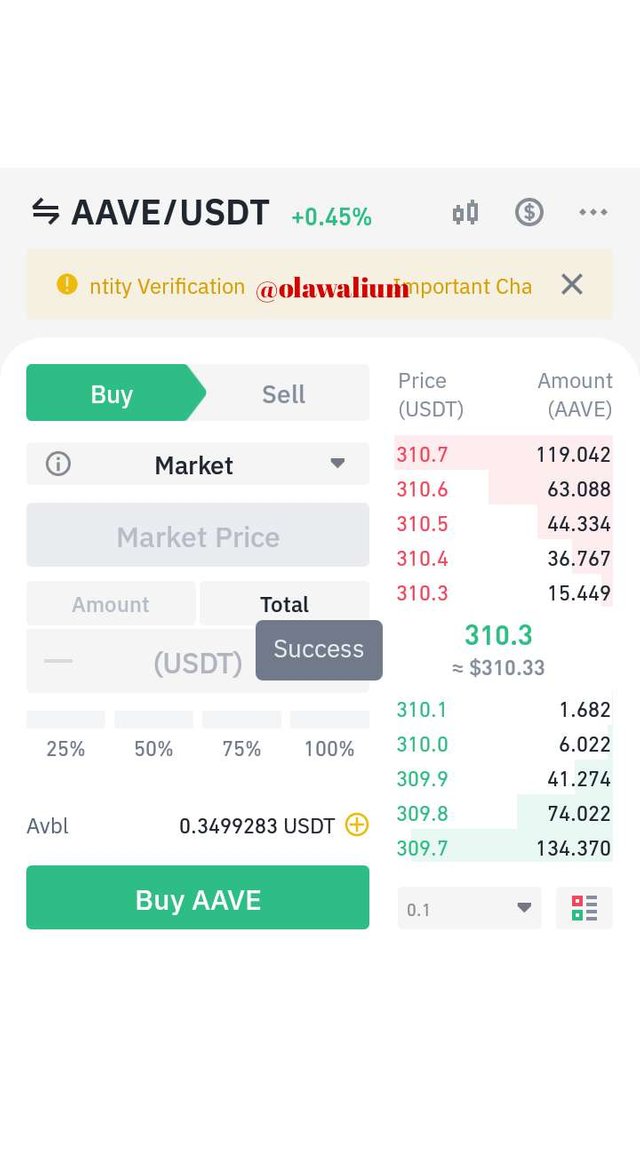
screenshot from Binance wallet and edited with PicsArt
The reason why I bought AAVE is because there's a huge potential for its increase according to its chart and the whitepaper study that I made before buying it. The potential is huge as it allows users to lend, borrow and even earn which bodes well for usage and potential price surge too. The interesting thing about Aave is that borrowers don't get charged extra fees and they can also use the token as collateral to enable them to activate the discounted fee. The most interesting thing about it is that it allows users to make a vote on any change to the policies which makes it more open.
The creator and the owner (CEO) of Aave is no other person than Stani Kulechov. Aave, which is an open-source and decentralized liquidity market protocol to receive interest when you deposits and when you borrow an asset.
He was a law student at the University of Helsinki when he first got engaged into Ethereum and he has been looking for ways on how he would have an impact on the traditional financial system that we have been used to.
[Source]
Conclusion.
Almost all the coins that can mine do their halving every 4 years, only for Dogecoin to do its halving every 69 days but there's is no more Dogecoin mining anymore. Obviously, until there is no more bitcoin and other cryptocurrencies available for mining, the mining would continue and the halving would keep happening.
Overtaking is allowed in cryptocurrency, that's why the Altcoin session would keep happening whenever another coin surpasses bitcoin.
Each coin is made for a purpose or a project, I'm sure this is the main reason for this assignment task, to get to know why some coins come to existing and what they are useful or made for.
References:
Plagiarism report:
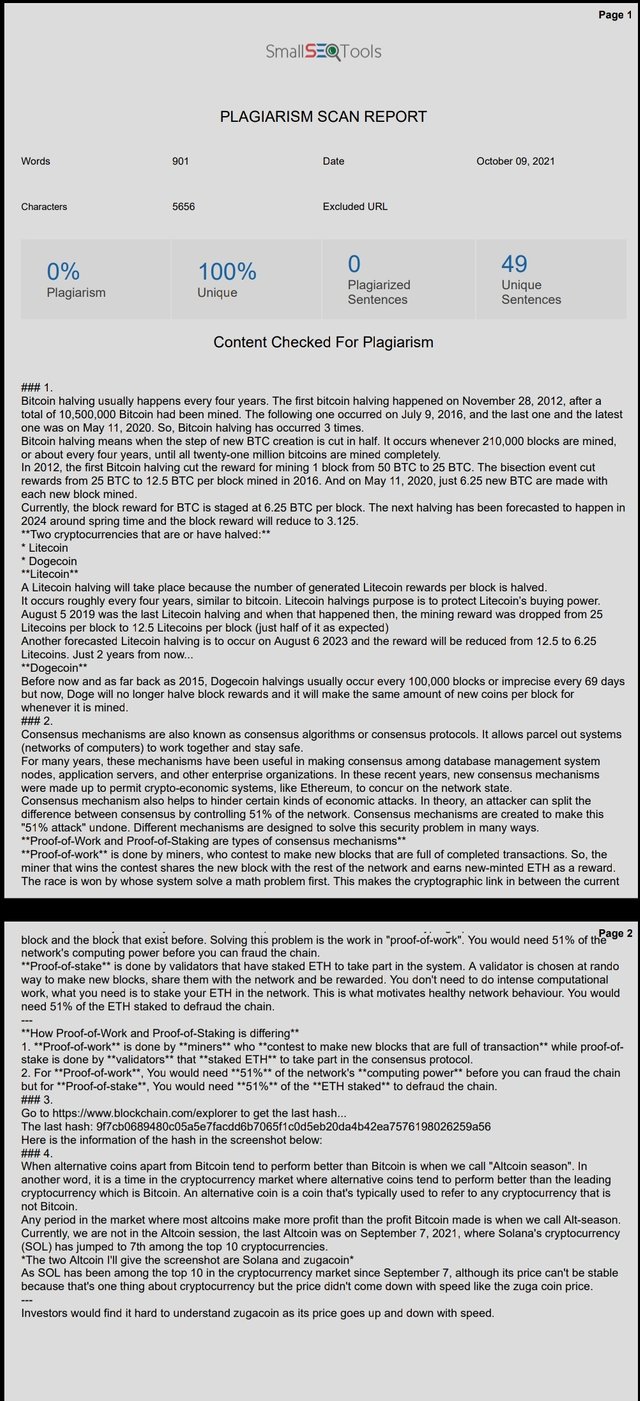
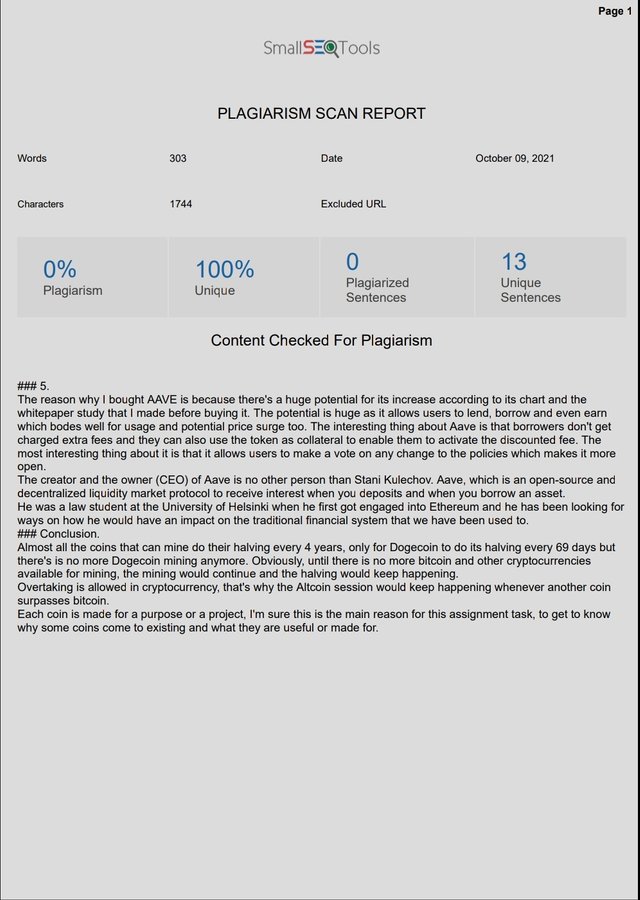
Thank you for your time.
My pen doesn't bleed, it speaks, with speed and ease.
Still me,
My tongue is like the pen of a ready writer.
Olawalium; (Love's chemical content, in human form). Take a dose today: doctor's order.

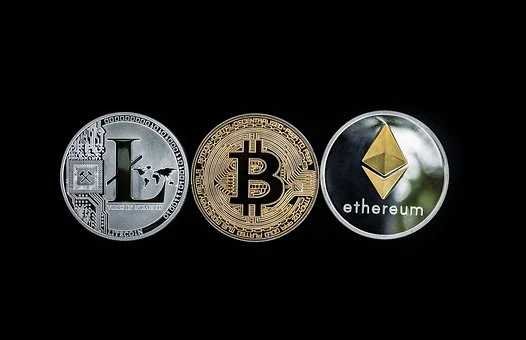
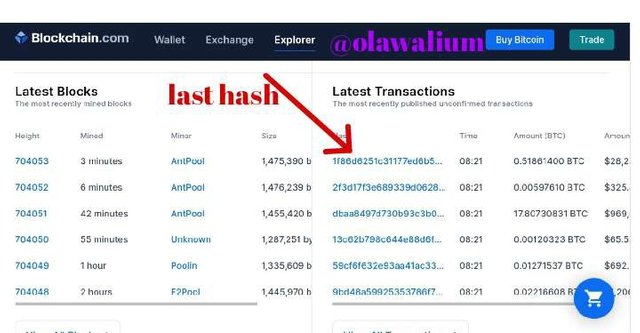
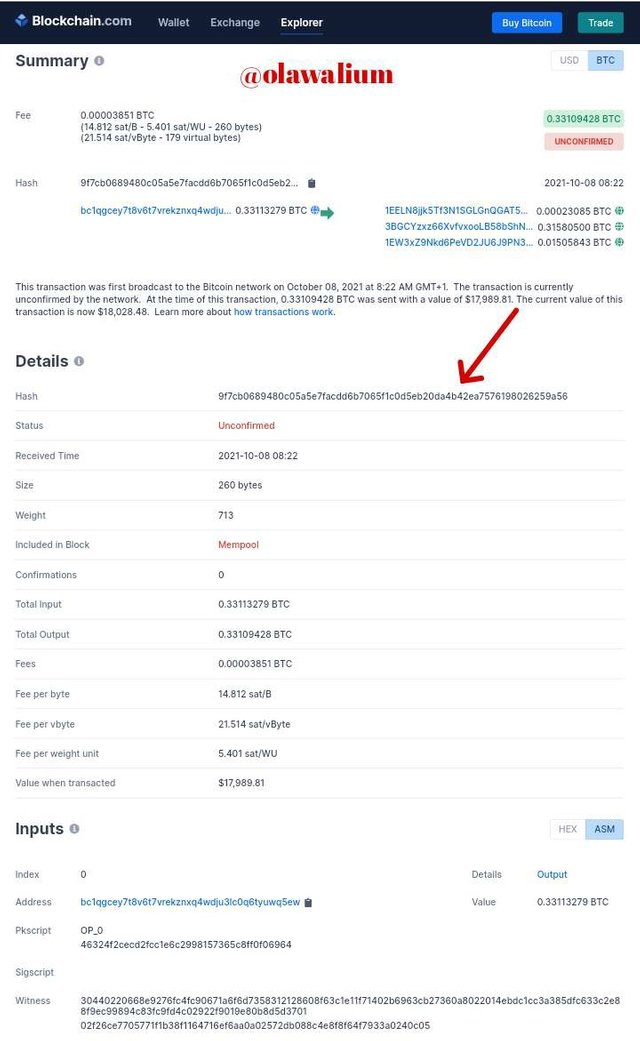
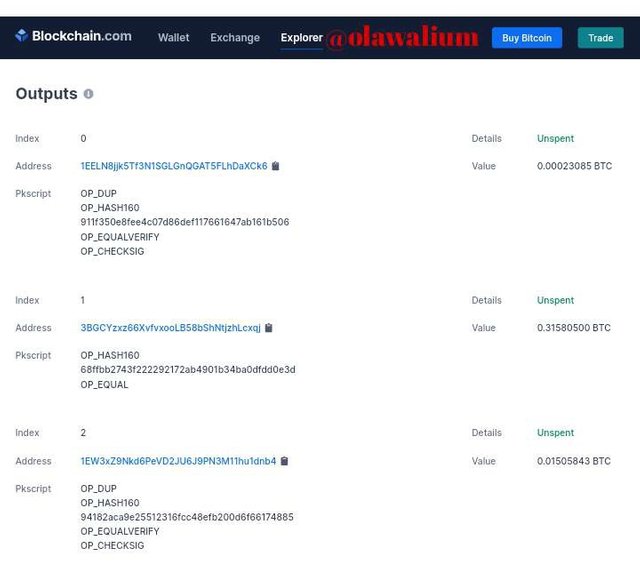
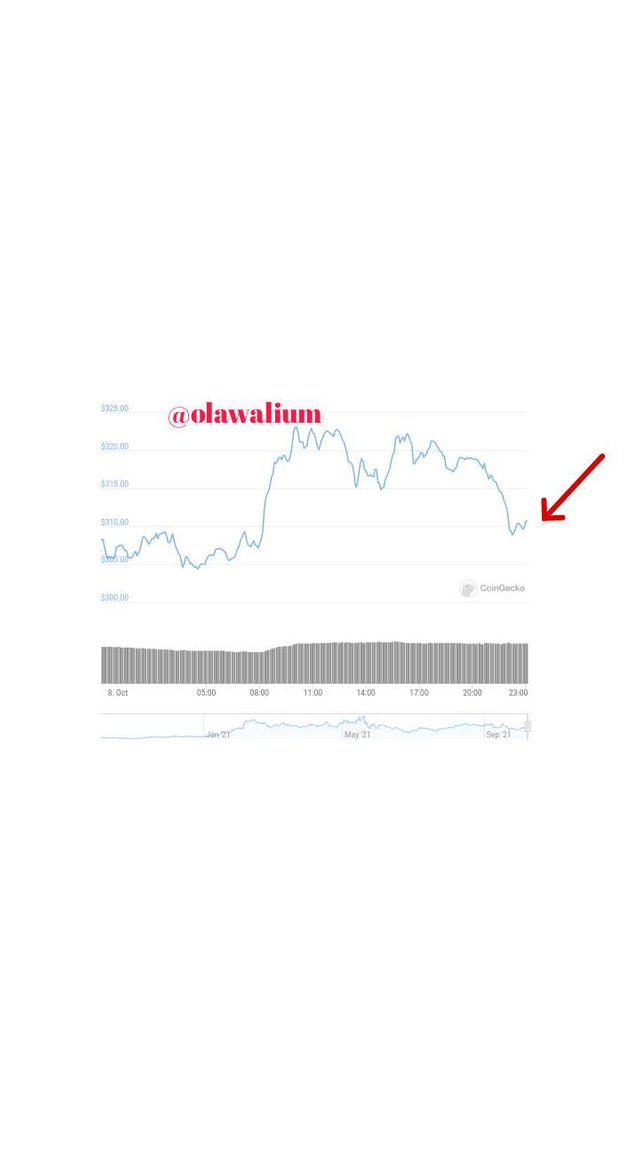
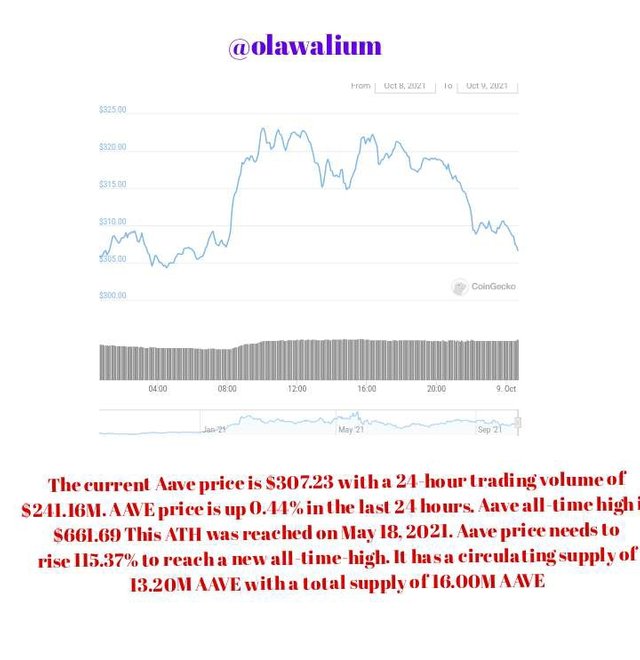
Gracias por participar en la Cuarta Temporada de la Steemit Crypto Academy.
Continua esforzandote, espero seguir corrigiendo tus asignaciones.
Thank you so much, prof... I appreciate it. How do I justify the text if I may ask, please?